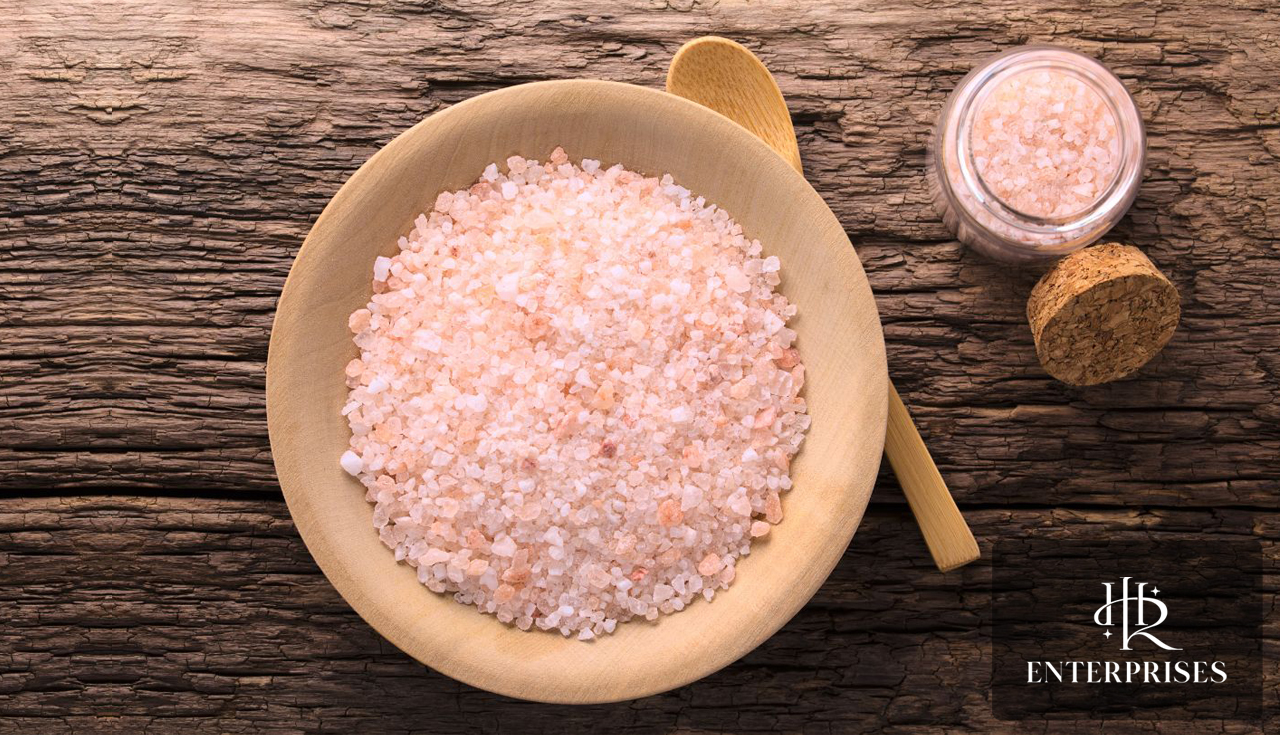Himalayan Pink Salt, Sea Salt, Table Salt: Comprehensive Comparison
Salt is a staple in kitchens around the world, but not all salt is created equal. Himalayan pink salt, sea salt, and table salt differ in their origin, mineral content, and health benefits. In this article, we will provide a thorough comparison of these three popular types of salt.
Origin and production
Himalayan pink salt: Himalayan pink salt is extracted from ancient sea salt deposits in Pakistan’s Khewra
Salt Mines are thought to have formed millions of years ago. Hand-mined, minimally processed, and trace elements, particularly iron oxide, preserve the natural pink hue.
Sea Salt: Sea salt is made from evaporated seawater and is obtained using a variety of methods around the world. Minimal processing retains some minerals from the ocean. The taste and texture vary depending on the water source and harvesting method.
Salt: Salt is primarily mined from underground salt deposits. It is highly processed to remove minerals and usually contains additives to prevent agglomeration. Most table salt is fortified with iodine and may contain anti-caking agents.
Nutritional profile
Pink Himalayan Salt: Rich in trace elements such as potassium, magnesium, and calcium, pink Himalayan salt is highly valued for its nutritional value. These minerals contribute to its unique taste and color. However, the concentration is too low to have a significant effect on the diet.
Sea Salt: Similar to pink Himalayan salt, sea salt contains trace minerals such as potassium, iron, and zinc. The exact mineral composition varies depending on the source and also affects taste and color.
Salt: Consists primarily of sodium chloride. Iodine added to table salt is important in preventing iodine deficiency. However, it lacks a wide range of minerals found in Himalayan pink salt and sea salt.
Health Effects
Pink Himalayan Salt: Often marketed as a healthier alternative, it has larger crystals and a slightly lower sodium content than table salt. However, the difference is small and does not have a significant impact on health.
Sea Salt: Similar to pink Himalayan salt, sea salt is considered a healthier option. The coarse texture may reduce consumption and reduce sodium absorption. However, its health benefits compared to table salt have not been proven.
Table Salt: The biggest health concern with table salt is its high sodium content, which can lead to high blood pressure and cardiovascular disease. Iodine fortification is very important to prevent iodine deficiency, especially in areas where other iodine sources are deficient.
Culinary Use
Pink Himalayan Salt: Its unique pink color and subtle flavor make it popular for refining dishes. It is also used on hot plates for grilling meat and vegetables, adding a mild salty taste.
Sea Salt: Sea salt is available in both fine and coarse consistencies and is versatile in cooking. Its unique flavor lends itself to sophisticated cooking, and its crispy consistency is prized in salads and baked goods.
Table Salt: Because table salt has a fine, uniform texture, it is often used in baking where precise dosing is important. It is also a staple spice in everyday cooking. ecological damage
Pink Himalayan Salt: Concerns have been raised about the environmental impact of pink Himalayan salt mining. The sustainability of its extraction and the carbon footprint associated with global transportation are important considerations.
Sea Salt: Environmental impacts vary depending on the method of collection. Traditional methods have a smaller environmental impact than large-scale industrial operations that can destroy local ecosystems.
Salt: Mining and refining salt requires large amounts of energy and can have significant environmental impacts. However,
because it is widely available and locally produced, transport-related emissions are reduced.
Price and Accessibility
Himalayan Pink Salt: Often more expensive than other salts due to its purported health benefits and aesthetic appeal. Its price also reflects the cost of importing from Pakistan.
Sea Salt: The price of sea salt can vary widely. Artisan sea salt, which has a unique flavor and texture, is often more expensive than commonly available types. Table salt: This is the cheapest and most widely available salt. Its low cost and strength make it a staple in many homes.
Conclusion
Himalayan pink salt, sea salt, and table salt vary in their origin, mineral content, and culinary uses, and the choice you make will depend on personal preference, use, and price. From a nutritional point of view, differences in mineral content are minimal and do not significantly contribute to nutritional requirements. Health effects are related to total sodium intake, not the type of salt used. Environmental aspects and sustainable sourcing are becoming increasingly important when choosing salt. Consumers are encouraged to consider these factors in conjunction with their health and culinary preferences.
In conclusion, each type of salt has unique properties and uses, but consuming salt in moderation is key to maintaining a healthy diet. Understanding these differences can help you make informed decisions that are consistent with your personal health goals, culinary needs, and environmental values.avorite uses in everyday cooking.

